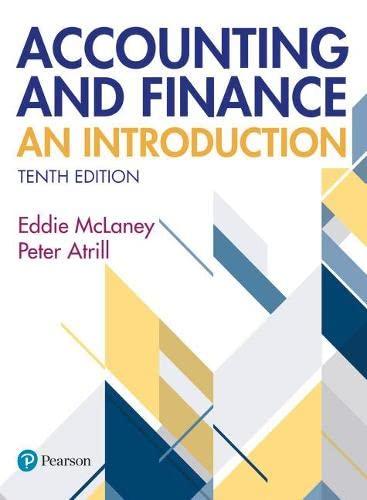Question
DY is a company who is using a standard costing system. the company has two manufacturing plants, one in A and the other in B.
DY is a company who is using a standard costing system. the company has two manufacturing plants, one in A and the other in B. For the A plant, DY has budgeted annual output of 2,000,000 units. Standard direct labor hours per unit are 0.5 hours and the variable overhead rate for the A plant is $3.30 per direct labor hour. Fixed overhead for the A plant is budgeted at $2,400,000 for the year.
For the B plant, DY has budgeted annual output of 2,100,000 units with standard direct labors hour per unit of 0.5 hours. However, the variable overhead rate for the B plant is $3.10 per direct labor hour, and the budgeted fixed overhead for the year is only $2,205,000.
Firm management has always used variance analysis as a performance measure for the two plants and has compared the results of the two plants.
Martin has just been hired as a new controller for DY. Martin is a good friend of B plant manager and wants him to get a favorable review. Ken suggests allocating the firms budgeted common fixed costs from supporting departments of $3,150,000 to the two plants, but on the basis of 1/3 to B plant and 2/3 to the A plant. His explanation for this allocation base is that A is a more expensive city then B.
At the end of the year, the A plant reported the following actual results: output of 1,950,000 units using 1,020,000 direct labor hours in total, at a cost of $3,264,000 in variable overhead and $2,440,000 in fixed overhead.
Actual results for the B plant are an output of 2,175,000 units using 1,225,000 direct labor hours with a variable cost of $3,920,000 and fixed overhead cost of $2,300,000. The actual common fixed costs from supporting departments for the year were $3,075,000, 1/3 of which is allocated to B plant and 2/3 of which to the A plant.
A) Calculate the budgeted rate per direct labor hour for the fixed overhead separately for each plant, under both scenarios of excluding and including allocated common fixed costs from supporting departments.(Note: need to calculate for both scenarios)
B) Calculate the variable overhead spending variance and the variable overhead efficiency variance separately for each plant.
C) Calculate fixed overhead budget and volume variances for each plant, under both scenarios of excluding and including allocated common fixed costs from supporting departments. (Note: need to calculate for both scenarios)
Step by Step Solution
There are 3 Steps involved in it
Step: 1

Get Instant Access to Expert-Tailored Solutions
See step-by-step solutions with expert insights and AI powered tools for academic success
Step: 2

Step: 3

Ace Your Homework with AI
Get the answers you need in no time with our AI-driven, step-by-step assistance
Get Started


